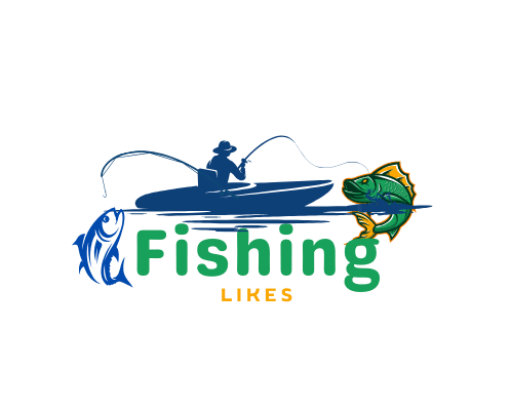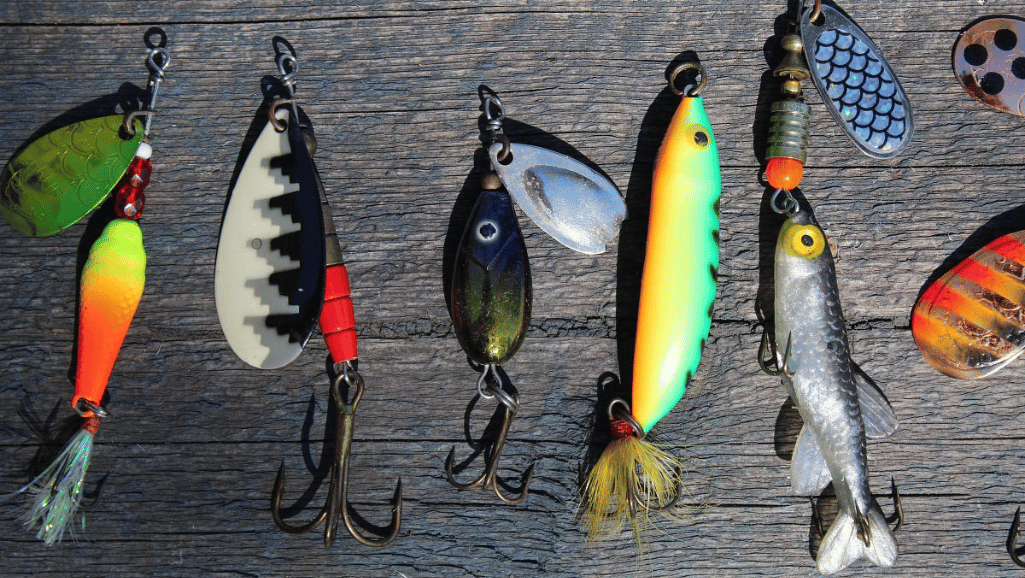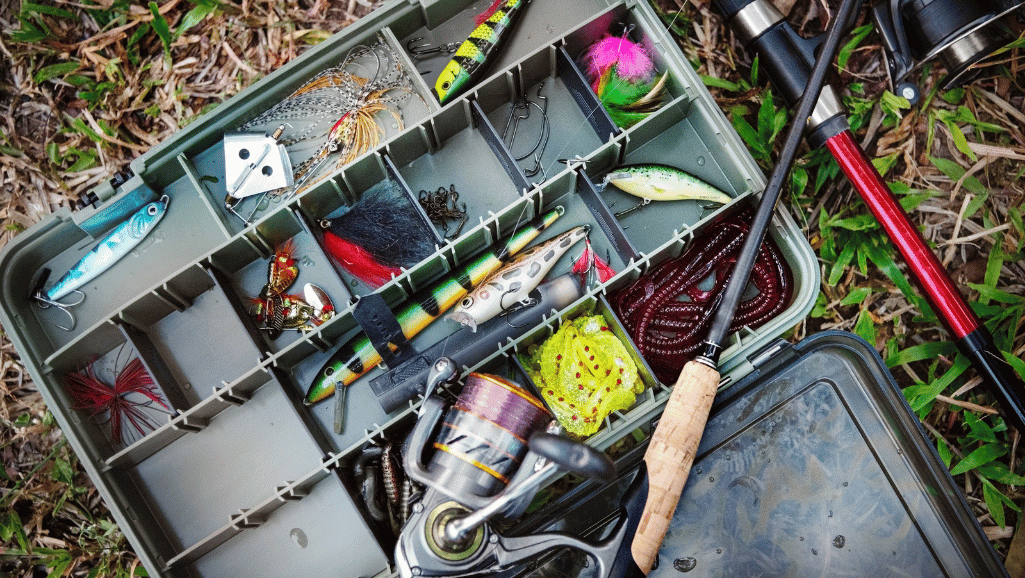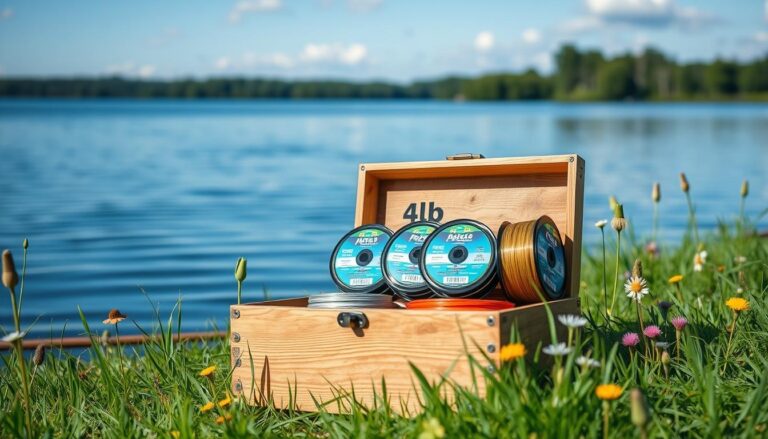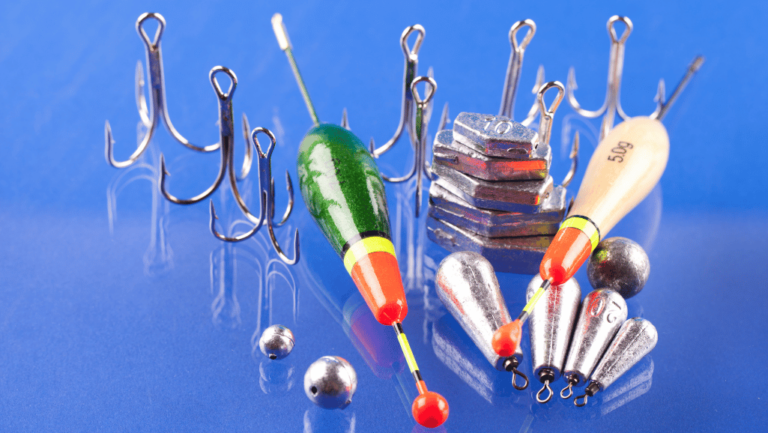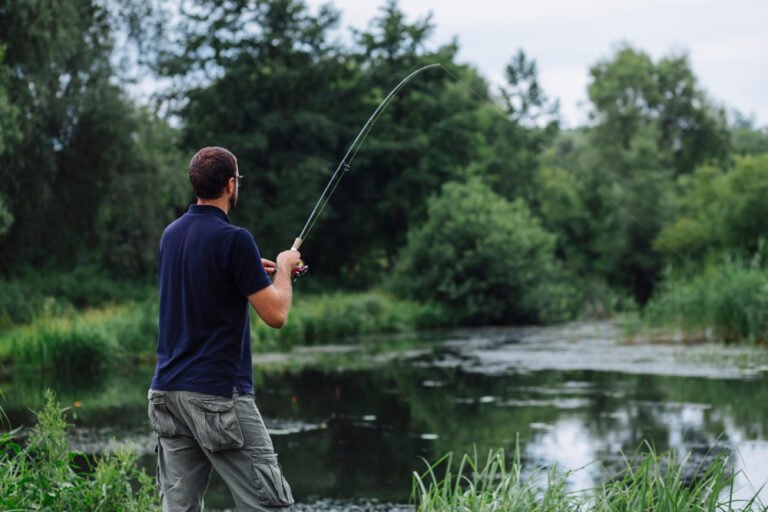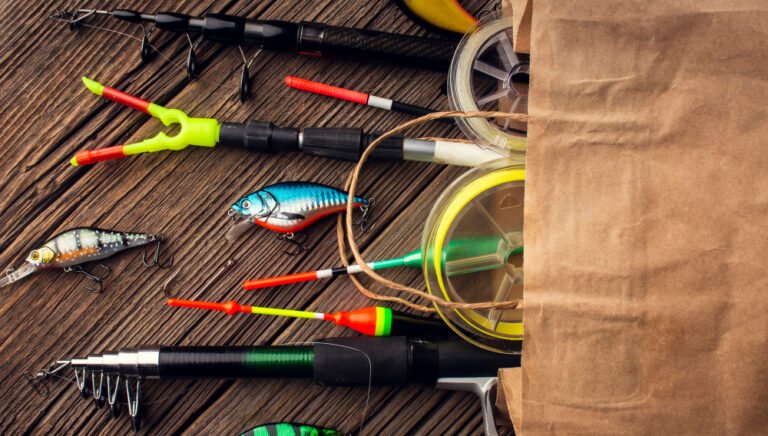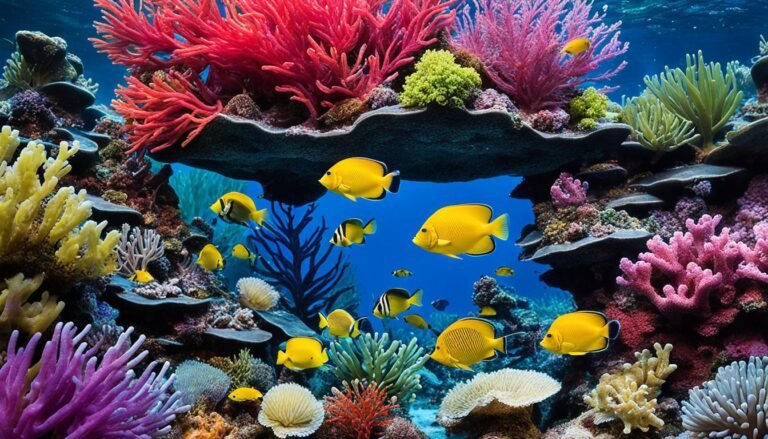Being new or experienced, choosing the best bait makes fishing better. You can learn about all kinds of fishing bait here. This guide shows which baits work best in different waters. It’s key to knowing the best bait for fishing. Doing so helps you make smart decisions and catch more fish.
There’s a lot to choose from, like live worms or fancy soft plastics. Each one is good for catching certain fish in certain places. By knowing about all the options, you’ll be ready for any fishing trip.
Key Takeaways
- Fishing lures are generally more expensive than live bait.
- Lures can get snagged on underwater structures, making retrieval difficult.
- In colder waters, live bait tends to be more effective than artificial lures.
- Crankbaits often feature multiple treble hooks for enhanced catch rates.
- Spinnerbaits like the Blue Fox Classic Vibrax Spinner are highly effective for Bass, Panfish, and Pike.
- Soft plastics are a popular choice, particularly for Bass fishing.
- Fly fishing lures are designed in both floating and sinking varieties to suit different fishing conditions.
Introduction to Fishing Bait
Fishing bait is key for successful angling. Over the years, many baits have proven their worth with a wide range of fish. For example, largemouth bass in North America love certain baits. Bluegills are easy to catch with the right bait. Knowing whether to use live or artificial bait is important to catch more fish.
Live bait has a big following because it looks and moves naturally. Nightcrawlers are a top choice for many fish, like largemouth bass, bluegill, and crappie. These fish inhabit freshwater across North America. However, artificial bait is getting more popular. It’s versatile and you can use it again. Improved materials let artificial lures act and look like the real thing, bringing in various fish.
Fishing offers a wide range of bait options. You can choose from live bait like worms and maggots to unique baits such as bread paste. Even fruit seeds work for catching certain catfish. Picking the right bait is crucial for a successful fishing trip.
In different waters, you’ll need to choose your bait carefully. For example, crappies like to gather in the shadows. Flounder are easier to catch in the summer when they move to shallow waters. Your choice between live and artificial bait depends on the fish you’re after and the place you’re fishing.
The world of fishing bait is always changing. New and old methods are used to fit today’s angler needs. By learning about bait and its uses, anglers can have more success. They can adapt their methods to catch different fish in various environments.
Live Bait vs Artificial Bait
Choosing the right fishing bait is key to catching more fish. Live bait and artificial bait both have pros and cons. They work well in different fishing situations.
Advantages of Live Bait
Live bait like worms and minnows attracts fish with its natural look and smell. It’s low cost or free if you can find it outdoors. Let’s dive into why live bait is a great choice:
- Natural Movement and Scent: Fish find live bait irresistible, making your chances of a catch higher.
- Cost-Effective: It’s often cheaper than alternatives and can be found for free in nature.
- Variety of Species: Live bait pulls in a range of fish, making fishing more exciting.
Pros and Cons of Artificial Bait
Artificial bait is a smart, eco-friendly choice. It comes in many types and works well under different fishing conditions. But its effects and pros differ from live bait:
- Reusable: Artificial baits are multi-use, giving you value over time.
- Less Unwanted Catch: You can focus on catching the big fish with artificial bait.
- Fish Survival: Using lures can help fish survive if you catch and release them.
- Ecosystem Benefits: They help keep bait fish populations healthy by not overfishing them.
Each bait type has its own issues. Live bait may lead to more deeply hooked fish, affecting their post-catch survival. While artificial bait supports the environment, it doesn’t always attract fish as well. For a deeper look at bait comparison, check out this resource.
| Aspect | Live Bait | Artificial Bait |
|---|---|---|
| Cost | Generally Cheaper | One-Time Purchase |
| Effectiveness | High (Due to Natural Scent and Movement) | Variable (Depends on Presentation) |
| Environmental Impact | May Lead to Overharvesting | Helps Maintain Bait Species |
| Fish Survival in Catch-and-Release | Lower (Due to Deep Hooking) | Higher (Reduces Deep Hooking) |
Common Types of Freshwater Fishing Bait
Freshwater anglers have many popular baits to choose from. Each bait is good for catching different kinds of fish. Knowing about these baits can make fishing more fun. Here are a few bait options for those who enjoy fishing in freshwater:
Worms
Worms are very versatile and work well for many types of fish. Bass, panfish, and trout like to eat them. Their smell and how they move in the water attract fish. Using worms is also cheaper than buying lures, which is great for many people.
Grubs and Crickets
Grubs and crickets are great for fish like panfish, sunfish, and trout. They look and move naturally, drawing these fish to your line. You can use them in various freshwater spots, which makes them a top choice for bait.
Minnows
Minnows are a favorite bait for many freshwater anglers. They come in different sizes for targeting various fish, from bass to walleye. But, remember, some places don’t allow using certain minnows as bait. Still, minnows are a go-to choice for catching fish.
| Bait Type | Ideal For | Advantages |
|---|---|---|
| Worms | Bass, Panfish, Trout | Versatile, Natural Scent |
| Grubs and Crickets | Panfish, Sunfish, Trout | Natural Attraction, Versatile Use |
| Minnows | Bass, Walleye | Diverse Sizes, Effective for Various Species |
Popular Types of Saltwater Fishing Bait
Choosing the right bait for saltwater fishing is key. It depends on what fish you’re after and where you’re fishing. Let’s dive into some top bait options for saltwater fishing that help anglers catch more fish.
Live Shrimp
Live shrimp are a must-have for saltwater fishing. They have a strong natural smell and move a lot. This makes them hard for fish, like snapper and redfish, to ignore. They are very effective in both shallow and deep waters. Live shrimp are easy to use and can up your chances of catching fish by a lot.
Cut Bait
Cut bait is made by slicing up fish for bait. It has a strong smell that attracts a wide variety of fish in the sea, including sea bass, mahi mahi, and bluefish. When fishing deep waters, this cut bait can create a scent trail that leads fish right to your hook. The strong smell from cut bait helps in catching the fish you really want.
Squid and Octopus
Using squid or octopus is another great tactic for saltwater fishing. They are tough and last long in saltwater. Squid and octopus are good at drawing in many fish types. These baits are great for various fishing situations. Squid, especially, is loved by big fish such as grouper because of its look and smell.
In short, live shrimp, cut bait, and cephalopods are all widely used baits for saltwater fishing. Trying these options and using the right fishing skills can boost your fishing success. Always check the rules about bait to fish in a way that’s good for the environment.
Understanding Soft Baits
Soft baits are a special kind of fishing bait. They are mostly made from plastisol, a vinyl plastic. The mix of resins and plasticizers can change how soft or hard they are. This change helps them move in the water in a way that attracts fish. Making these baits by hand is a detailed process. It involves carefully pouring them into molds, which are open at the top. They then need a day to harden before they are ready to use.
Tube jigs need a lot of work, which is why many people like to make them by hand. They are not usually made by machine because they need to be perfect. Storing soft baits correctly is also key. If they are not stored properly, they might lose their shape. People often argue over whether hand-made or machine-made soft baits work better. But, the key is the quality of how they’re made. And, of course, how and where you use them matters a lot too.
The right level of softness is very important for soft baits. It helps them move like real bait and catch fish’s attention. For instance, shad tails make a strong vibrating and wobbling motion. This makes them a top choice for angling. Curly tails are also a hit because they move in a way that many fish find irresistible. Paddle tails work best in deep water, their up-down movement mimics real small fish. Then there’s the fork tail. When you move it, it looks like a sick fish struggling. Fish often go for it.
Anglers should keep up with what’s new in soft bait by reading. Fishing magazines and the internet are good places to look. Working on the small tools you use in fishing can help you catch more fish. Soft baits are great because they can be used in many different ways and for many types of fish. So, they are a smart option for fishing in different places with different goals.
Choosing the Best Bait for Fishing
Choosing the right bait is key for a successful fishing trip. It’s important to know what kind of bait fish like. This makes sure you’re using the best one for the fish you want to catch.
Considering Fish Species
Fish have their own favorite types of bait. For example, cured fish eggs work well for catching fish that are laying eggs. Other options, like crayfish, are good for catching particular fish such as Smallmouth Bass when alive or helping bait Catfish when dead. It shows you have to pick the right bait for the fish you’re after.
Minnows are very adaptable and great for moving water. They work well for many kinds of fish. Worms are a budget-friendly choice that are perfect for many fish, including Bass and Walleye. Knowing these preferences is important when selecting your bait.
| Bait | Target Fish | Unique Aspect |
|---|---|---|
| Plastic Baits | Various species | Widely used since the 1950s, versatile in action |
| Cured Fish Roe | Spawning Fish | Ignored by other fish during spawning |
| Crayfish | Smallmouth Bass (alive), Catfish (dead) | Effectiveness varies with the state of the bait |
| Shrimp | Catfish | Optimal in cooler waters (70 degrees or less) |
| Worms | Bass, Walleye, various freshwater species | Affordable, versatile, and easy to use |
Environmental Factors
The where of fishing matters just as much as the bait. For cool waters, shrimp bait is great for Catfish. Dry flies and other flies work in clear waters. They look like real insects and lure in fish like Smallmouth Bass and Trout.
Weather and water play a big role in what bait to use. Spinner baits are good in any water. Jigs work all year, are cheap, and work around objects like rocks and weeds. Knowing about the water and weather helps you pick the perfect bait for your catch.
Tips for Using and Storing Bait
Keeping your bait fresh and ready to use is key to a successful fishing trip. It’s important to know how to use and store both live and artificial bait. Doing this can lead to more fish caught on your line.
Best Practices for Live Bait
Live bait like nightcrawlers and worms needs a cool spot. They do best between 40 and 60 degrees Fahrenheit, around 50 degrees is perfect. A freezer can be set to this temp for storing them. Mealworms, waxworms, grasshoppers, and crickets like it cool too, but not freezing.
Don’t let live bait get warm out on the water. Keeping it cold and moist makes it more appealing to fish. This freshness could mean more bites for you.
Storage Solutions for Artificial Bait
Artificial baits have their own care needs. Soft plastics and hard baits keep better when stored right. Soft plastics, like worms, should go in ziplock or freezer bags to avoid melting. You may want to keep them in their original packaging in airtight bags or bins. This can help keep them organized and save money on buying more later.
If you fish from the bank, a kayak, or the back of a boat, using trays for soft plastics is smart. It saves space and keeps your baits tidy.
Hard baits, on the other hand, do well in waterproof containers. This keeps them from rusting and getting ruined. It’s good to keep small items in these containers too, like beads and sinkers. Labeling the storage can help you find what you need fast.
Keeping both your bait and how you store it clean helps them last longer. And that means you can keep fishing more successfully.
| Type of Bait | Storage Method | Temperature Range |
|---|---|---|
| Live Bait (Nightcrawlers) | Refrigerator/50-degree freezer | 40-60°F |
| Live Bait (Mealworms, Waxworms) | Cool, not cold environments | Not specified |
| Soft Plastic Baits | Ziplock bags, original packs, trays | Avoid hot temperatures |
| Hard Baits | Waterproof containers | Not specified |
Getting Advice from Local Sources
Want to boost your fishing game? Talking to local fishermen and bait shop owners is key. They know a lot about the area’s fishing conditions. This info is vital for your fishing trips. These folks understand the local fish, like Channel Catfish and Rainbow Trout, very well. They can tell you the best baits and ways to fish.
Talking to them gives you spot-on advice that fits exactly where you’re fishing. For example, bait shops owners can clue you in on the top live baits to use. They might recommend minnows for lakes or cut bait for specific fish like Channel Catfish. Their bait shop expertise is precious for catching more fish.
You’ll also learn about the best fishing times and seasons. Did you know carp fishing is best in Ohio from June through September? Or that crappie fishing rocks in spring and early summer? This kind of knowledge can make a big difference in your fishing trips. Local experts usually keep up with this info and they can tell you what’s good day-to-day.
Using local fishing advice is about knowing the right baits and finding the best spots. You could find out that leeches are great for Striped Bass or dough balls for Channel Catfish. They can also point you to the hot fishing spots in places like Lake Erie or Maumee Bay. This can make your fishing trips much more successful.
In the end, connecting with the folks who really know local fishing can make a huge difference. Their advice, mixed with what you get from bait shops, can really up your fishing game. You’ll be better prepared for the specific challenges of each fishing spot. And you’ll likely catch more fish because of it.
Conclusion
Selecting the right bait is crucial for a great fishing experience. There are many options. You can use live bait like earthworms or choose artificial lures. For waters where you might fish, nightcrawlers and crickets are popular freshwater choices. In saltwater, shrimp and cut bait work well because of their strong scents.
It’s key to know the difference between freshwater and saltwater bait. Freshwater bait has a smell that attracts fish. Saltwater bait, meanwhile, needs to lure in large species with its strong odor. This guide shows the vital factors to think about, like how easy the bait is to get and what you want to catch. Picking the right bait is critical for a successful fishing trip.
Whether you’ve been fishing for years or are just starting, using the tips in this guide will help you catch more. Knowing about both live and artificial bait will make you a better angler. This way, you can fish in any condition and have a fun, fruitful trip.
